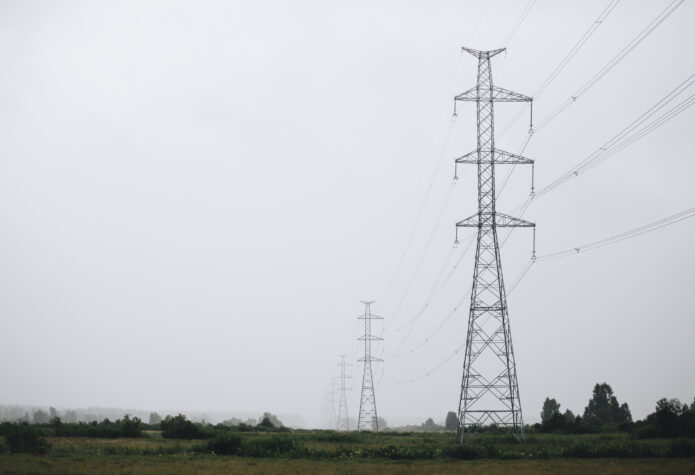Energising independence: the Baltic shift to sustainable autonomous energy

Column by NIB’s Senior Economist Igors Kasjanovs and Sustainability Advisor Zanda Krūkle
Russia’s war in Ukraine has brought not only security, but also energy independence into focus for the Nordic-Baltic region. In the past, the Baltic States in particular have been grappling with the dual challenge of their previously relatively high dependence on Russian energy flows and somewhat isolated energy networks from Europe. However, the geopolitical tremors are fast-tracking the Baltics’ energy transition, speeding-up their pursuit of energy autonomy and the transition to a sustainable, low-carbon future.
From dependence to diversification
The ongoing war is a stark reminder of the perils of energy dependence for the Baltic economies. Historically somewhat linked to Russia for their energy needs—primarily on the fossil fuel side—for decades, the Baltic countries have not only faced political pressure but also risks of energy insecurity. The current geopolitical situation is therefore not only a challenge from an energy perspective but also a catalyst, accelerating efforts to untangle energy ties and reinforcing the importance of self-reliant, diversified and resilient energy systems.
NIB, in part owned by Estonia, Latvia and Lithuania, has always seen energy security as one of the material topics for the further convergence path of Baltic member countries. Over the last two decades, NIB has been financing various generation and network projects.
For example, during 2023, NIB has financed multiple developments, including Enefit Green’s wind and solar farms, which not only increase the resilience of the Baltic energy generation mix but also simultaneously reduce the need for imported fossil-based energy that previously often came from Russia.
It has been three decades since the Baltic countries regained independence, and their energy systems have since evolved. On the generation side, some of the most CO2-intensive generation modes have been phased out; nuclear generation has also been shut down. In the last two to three years, wind and solar energy have been experiencing accelerated growth – wind energy is growing rapidly in Lithuania and Estonia, while solar generation is growing in all three Baltic countries.
A lot has been done on interconnectivity—gas connections have been established/expanded in both northerly and southerly directions, as well as between the Baltic countries. In addition, natural gas import alternatives have significantly increased since the introduction of LNG import infrastructure capacities.
Like gas infrastructure, electricity interconnections have been strengthened both internally between the countries and—importantly—externally, thus connecting the Baltics to Europe and escaping the status of an isolated energy island. However, given the electrification of the Baltic and Nordic economies, more interconnections will be necessary. Recently, the physical and cyber security of energy systems, especially interconnections, have gained additional attention. Many of the assets in the energy system have also suddenly become a potential target in hybrid warfare. In future, therefore, additional attention will be required to improve energy system resilience not only to weather or market effects but also physical threats.
Although electricity still comprises a relatively small part of the final energy demand in the Baltics (biomass, natural gas and other fossil fuels constitute the majority), the availability and affordability of electricity will largely determine the future of the Baltic economies from both socioeconomic and environmental aspects. The Baltics, just like most other world economies, are expected to undergo a significant electrification phase, in which the share of electricity in the total energy generation and consumption mix will significantly increase due to the electrification of heating systems, industrial processes and—most visibly—transport.
A large step in this transition journey is the upcoming desynchronisation of the Baltic electric grids from those of Russia and Belarus. This move is important for energy security in the region. By integrating more closely with European electricity networks, the Baltic States aim to mitigate external influences and disruptions, fortifying their energy sovereignty. This integration also facilitates access to broader European energy markets, fostering competitive pricing and encouraging investment in local renewable energy projects.
To desynchronise, the Baltic countries have been investing in both generation capacities and the grid to provide reliable, stable and affordable electricity when Russian and Belarusian electricity are an option. However, for an efficient energy system it is not enough to invest only in generation and transmission infrastructure. Balancing and storing capacities are crucial, especially in a system where non-intermittent base load generation capacities (often fossil-fuel-driven) are also replaced by intermittent renewable energy generation. Over the years, the Baltics have therefore been investing in strengthening hydro resource utilisation, pumped hydro storage systems and recently even in grid battery systems.

Efforts to increase demand-side efficiency are just as critical
However, the focus on energy independence and transition is not and cannot be solely confined to the supply side. Demand-side efficiency is an equally if not more important component of the overall transition journey, especially given that many of the efficiency gains on the demand side can be relatively low-hanging fruits.
Compared to their Nordic neighbours and other EU economies, the Baltic States are contending with an ageing building stock (on both the housing and commercial/industrial sides), with negative implications for energy inefficiency and intensity[1]. The renovation of these buildings is important to reduce total energy demand and therefore also the environmental footprint.
In addition, the renovation of buildings is typically accompanied by significant improvements in living conditions such as air quality, noise insulation, access and general aesthetics. Comprehensive strategies targeting energy conservation—ranging from insulation and modern heating systems to smart technologies—can significantly cut energy consumption.
This efficiency leap is not just about savings: it is integral to the region’s energy security strategy, reducing overall dependence on imports and making renewable energy sources more effective. By recognising the need for demand-side improvements, NIB has stepped up efforts to finance investments that will increase the existing building stock’s efficiency.
For example, in recent years, NIB has financed renovation programmes for both housing and public buildings in Lithuania, as well as industrial projects with the aim of improving energy efficiency in industrial processes. The renovation of existing building stock is often a more sustainable choice than investments in new stock because the embodied carbon in construction materials can be considerably larger than the carbon emissions from buildings’ actual operations.
Of course, it is not only buildings that will lead to an increase in energy efficiency. Spurred by geopolitics, municipalities are changing their energy sources for heating. For example, NIB is financing Rigas Siltums’ biomass-based energy generation investments to transform district heating in the Latvian capital.
Moreover, manufacturing companies are replacing fossil fuels in their industrial processes, and service providers are changing their car fleets to more sustainable ones. At the same time, households are paying more attention to energy consumption—partly because of growing awareness, but mostly because of higher bills.
The combination of these efforts can be seen in operational statistics: the consumption of both electricity and, more importantly, fully imported natural gas has significantly decreased in 2022 and somewhat in 2023 as well. By financing projects supporting such developments, NIB is seeking to enhance the transition in most of the above streams.
Rocked by the geopolitical tension close to their borders, the Baltics stand at a transformative juncture in their energy system trajectory. The journey towards energy independence and sustainability is multifaceted, involving strategic decoupling from previous energy systems, investment in renewable generation and a focus on demand-side efficiency. If successful, this transition will set a precedent, highlighting how regional turbulence can forge pathways to autonomy and resilience for a stable and sustainable energy future.
[1] Expressed as the amount of energy needed to produce EUR 1,000 of gross domestic product.